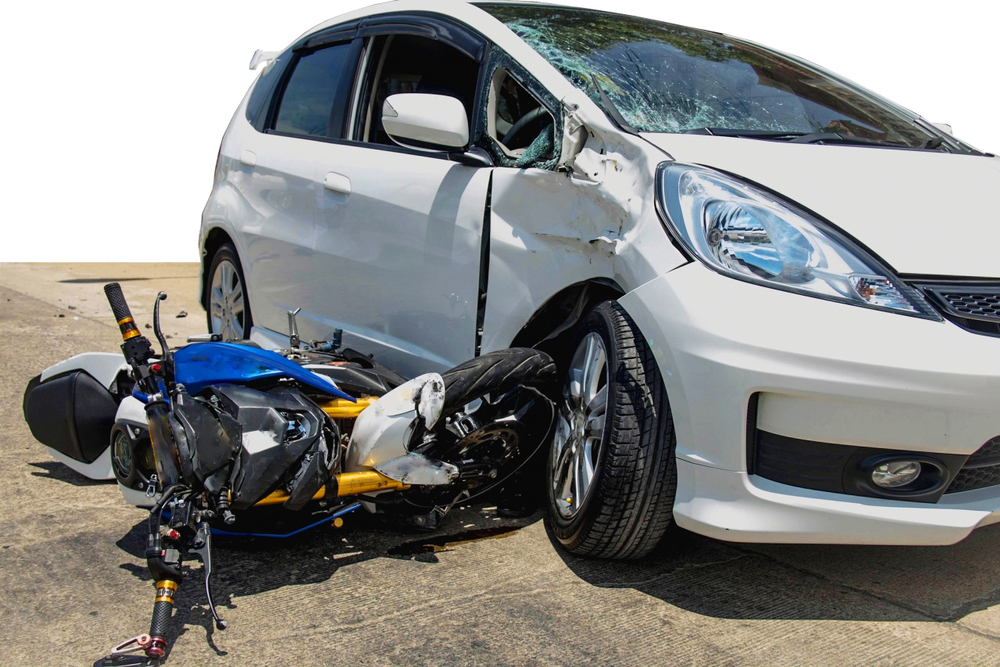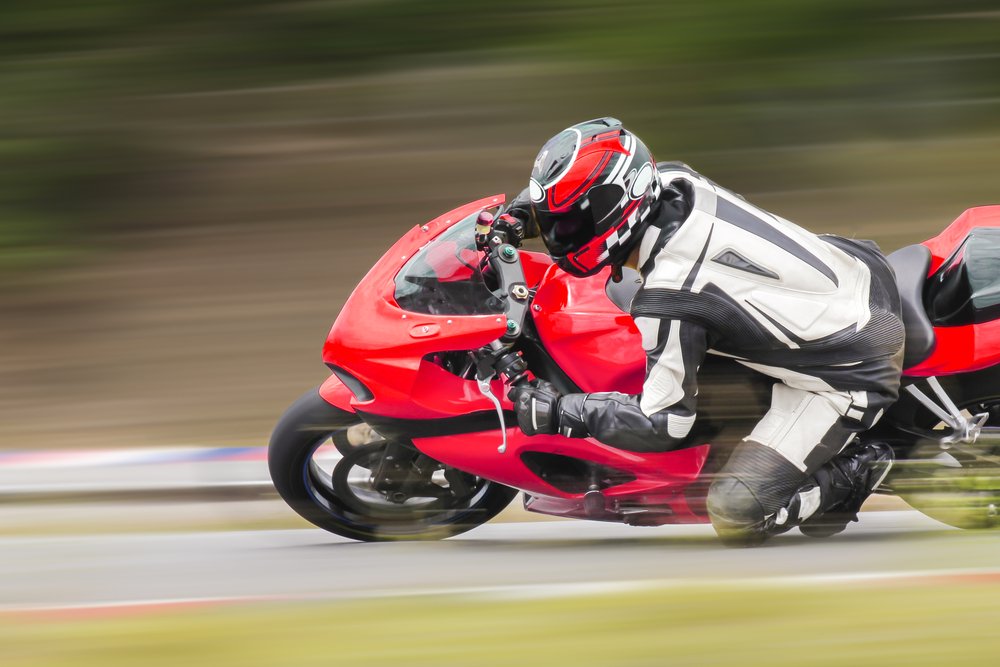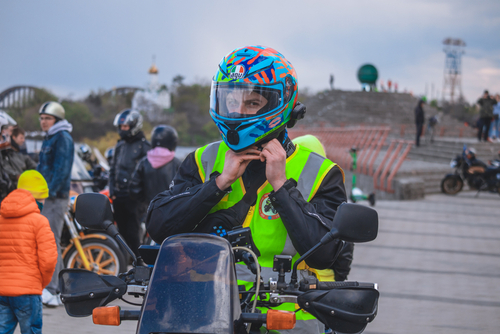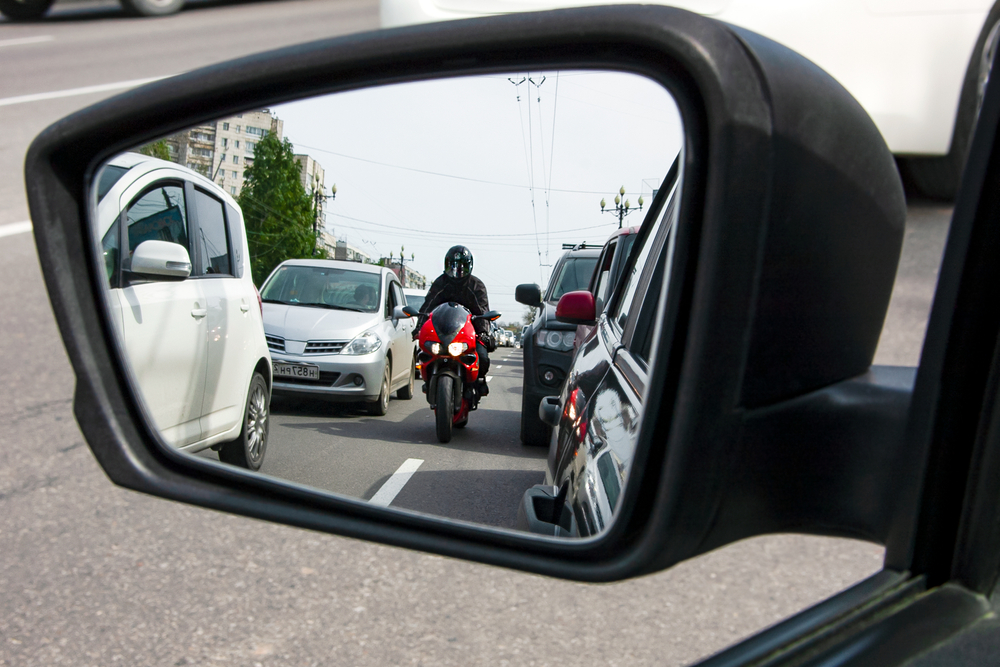Table of Contents (click to expand)
The open, single-track architecture of motorcycles makes them more vulnerable on the road, as compared to their four-wheeled counterparts.
Ever since I bought my first motorcycle, many friends of mine have expressed an interest in learning how to ride it. On a related note, I found a startlingly common trend—parents refusing motorized two-wheel vehicles to their children, even those who are well into adulthood.
Their reluctance was attributed to a common idea – motorcycles being inherently dangerous, and their kids being better off taking the bus.
Why Do People Use Two Wheelers At All?

History suggests that the first motorized vehicles were cars, so the genesis of motorcycles probably has an interesting explanation. The horse-drawn carriage was replaced by self-propelled cars, and in a similar fashion, the motorcycle (used interchangeably for all motorized two-wheeled vehicles throughout the article) was the modern replacement for a bicycle.
In the present day, all vehicles have evolved to suit the ever-changing needs of very demanding customers. Motorcycles present many advantages over cars, leading the world to have more vehicles on two wheels than four. They are also much less expensive to buy and run as compared to cars. They take up less space, and can park and maneuver through traffic much more conveniently.
They are generally more fuel efficient than cars and are even exempted from paying toll fees. Along with these tangible benefits, motorcycles are synonymous with a sense of freedom, adventure and leisure.
Also Read: What Are Motorcycle High Siders And Low Siders?
What Are The Cons Of Having A Motorcycle?
While the advantages of motorcycles are many, they do present certain practical disadvantages, such as a limit to the number of people and amount of luggage they can carry. At the same time, using motorcycles for commuting purposes during rain and inclement weather conditions is quite a challenging task.
However, none of these are significant for why motorcycles are increasingly discouraged as a form of transport. The bad reputation is earned due to their life-threatening vulnerability when sharing space with vehicles that are much bigger in size.
Let’s examine this risk in greater detail.
1. Conservation Of Momentum
Motorcycle accidents are a macabre example of this principle of physics. As per the law, the total momentum remains constant. Momentum is expressed as a product of mass and velocity, and the law can be mathematically represented as:
P1 = P2
Thus, m1.v1 = m2.v2
where p, m and v are the momentum, mass and velocity of the bodies coming in contact respectively. Owing to the large mass of a bigger vehicle, and the lesser mass of the motorcycle, conservation of momentum implies that the velocity attained by the motorcycle in the event of an accident are catastrophically higher, even if the bigger vehicle is at low speeds.
This often leads to grievous consequences for the rider and their motorcycle, as compared to the person driving the car.
2. Lack Of Protection
As seen above, most of the momentum gets transferred to the motorcyclist. While cars have a lot of safety features built in, motorcycles do not even have an external frame or a crash structure to protect the rider.

This makes them all the more vulnerable if an accident does occur. Motorcycles don’t have a retention mechanism, like seat belts in cars, so it becomes very difficult to accurately simulate motorcycle crashes.
3. Target Fixation
One of the demands of riding motorcycles is aggressively monitoring both primary and peripheral fields of vision. However, one tends to keep looking forward, oblivious to what is happening around them, leading many motorcyclists to miss crucial visual cues. These visual cues are important to take anticipatory and evasive maneuvers that will move you out of harm’s way.
4. Less Stability During A Skid
While all vehicles are susceptible to skids, single-track vehicles are the most vulnerable, as skids involve the rider falling off, while partially or completely disconnecting from the motorcycle.
Complete disengagement from the motorcycle is desirable, as it enables the rider to come to a stop after the skid, independently of the motorcycle. However, if the rider is only partially disconnected, the distance they skid before coming to a stop is now a function of the motorcycle’s motion, further aggravating their injury and increasing overall risk.
5. Power To Weight Ratio
More expensive motorcycles boast high displacement engines that push their performance figures close to four-wheeled vehicles. When this is coupled with their lighter weight, it translates to very high acceleration figures.

While the safest place to exploit the full potential of such bikes is on the race track, it’s not always possible or practical to do so. Hence, such motorcycles share public roads with other commuters. Owing to their high performance capabilities, it’s important for the rider to be skilled enough to make the journey. However, this is not always the case, and can result in reckless riding, as well as unfortunate accidents.
6. Enforcement Of Stringent Rules
Motorcycling, unlike driving cars is an inherently dangerous activity. This problem is usually worsened by the fact that motorcycles are much more affordable than cars. At the same time, there are few entry to prevent unskilled riders from buying and using them.

While this poses less of a threat in areas where the flow of traffic is highly organized, it is seriously hazardous in chaotic situations. That said, the authorities aren’t the only people to blame. Flouting the rules is common and even appreciated in many circles, negating the good done by any form of enforcement.
Also Read: Does Motorcycling Gear Really Save You? If So, How?
Are Motorcycles Really Dangerous?
The short answer is yes, but there is far more to motorcycles than their danger.
In all fairness, no form of commuting is free of risk, but there is a rational way to approach this problem. While the dangers of motorcycling over driving a car are very real, it is possible to make the roads safe for two-wheeled traffic.

Motorcyclists should constantly upskill themselves, invest in and use protective equipment, such as helmets, gloves and boots, and practice defensive riding. At the same time, cars must be better about watching for fellow motorcyclists and driving considerately!
How well do you understand the article above!

References (click to expand)
- R TRAINING —. Motorcycle Safety - Transportation Research Board. The Transportation Research Board
- Wells, S., Mullin, B., Norton, R., Langley, J., Connor, J., Jackson, R., & Lay-Yee, R. (2004, January 23). Motorcycle rider conspicuity and crash related injury: case-control study. Bmj. BMJ.
- New York City Motorcycle Safety Study - NYC.gov. nyc.gov
